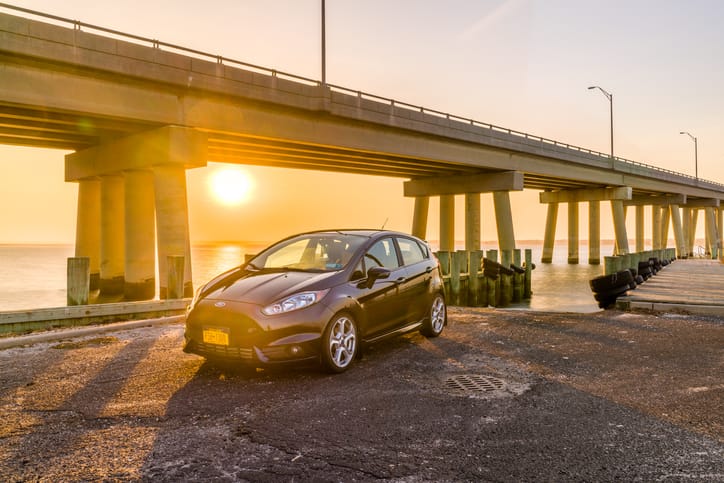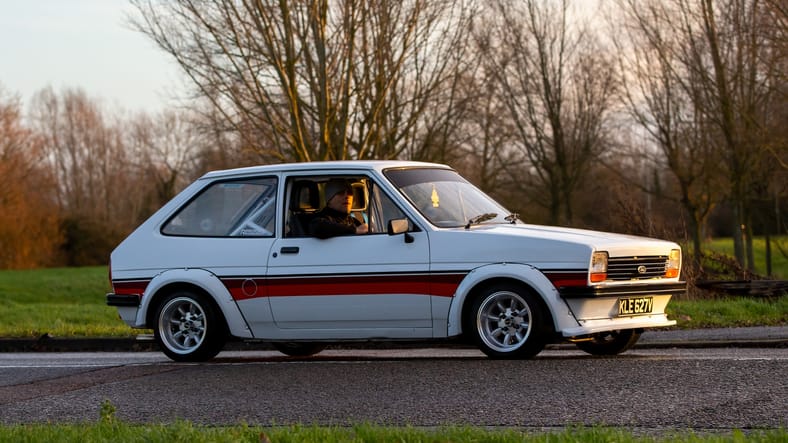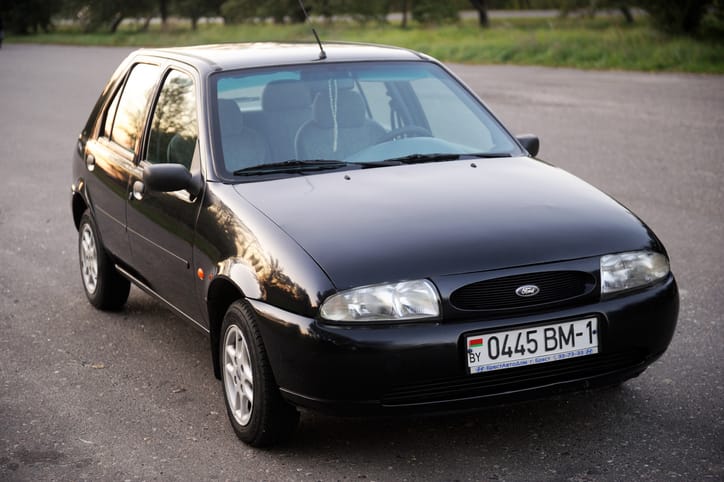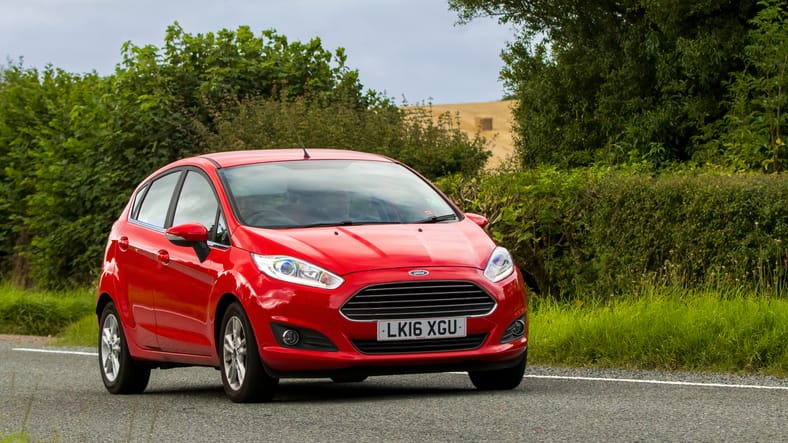The Ford Fiesta: A Look Back at a Subcompact Legend

The Ford Fiesta, a name synonymous with zippy performance and practical design in a subcompact package, had a remarkable journey spanning over seven generations. Debuting in 1976, the Fiesta carved a niche for itself in the automotive world, particularly in the European market. Produced primarily by Ford's European operations, it served as a more affordable and maneuverable alternative to the larger Escort, later succeeded by the Focus.
Birth of a Legend: The Early Fiestas (1976-1989)
Developed in response to the rising fuel costs of the 1970s, the first-generation Fiesta (1976-1980) was a tiny, lightweight car designed for fuel efficiency. It boasted a front-wheel-drive layout, a first for Ford in Europe, and offered a surprisingly spacious interior for its size. The 1.0-liter and 1.1-liter engines provided enough pep for city driving, and the Fiesta quickly gained a reputation for being nimble and fun to handle.

The second generation (1980-1989) saw the Fiesta mature in design and technology. Offered in three and five-door hatchback configurations, it sported a more modern look and a roomier cabin. Engine options expanded to include a 1.3-liter unit, while sportier versions like the XR2 and the 1.6-liter Ghia introduced some performance flair. The Fiesta became a sales success, establishing itself as a favorite among young drivers and those seeking an economical and enjoyable driving experience.
Evolving with the Times: The Middle Generations (1989-2008)
The third generation (1989-1996) introduced a sleeker, aerodynamic design. It retained its practicality while offering improved performance with a wider range of engine options, including a powerful 1.6-liter option for the sporty RS Turbo variant. The fourth generation (1996-2002) adopted a more rounded, "New Edge" design language that was in vogue at the time. Safety features improved significantly, with airbags and anti-lock brakes becoming standard on many models.

The fifth generation (2002-2008) marked a significant turning point. The Fiesta grew slightly larger, offering more interior space and improved comfort. Technology upgrades like a hands-free infotainment system and a panoramic sunroof were introduced on higher trim levels. The sporty ST variant, powered by a 2.0-liter engine, became a hot favorite for its exhilarating performance.
Modern Interpretations: The Later Fiestas (2008-2023)
The sixth generation (2008-2017) saw the Fiesta undergo a complete design overhaul. It sported a sharper, more aggressive look and a more upscale interior. Fuel-efficient engines became a priority, with the introduction of the economical EcoBoost engine lineup. The sporty ST line continued to impress with its turbocharged power and agile handling.

The seventh and final generation (2017-2023) arrived with further refinements. The design was tweaked for a more mature look, and driver assistance features like lane departure warning and automatic emergency braking became more widespread. However, in 2019, Ford announced that it would be discontinuing the Fiesta in North America, citing a shift in consumer preferences towards SUVs and trucks. Production in Europe continued for a few more years before ending in 2023.
A Legacy of Fun and Efficiency
Throughout its history, the Ford Fiesta carved a niche for itself as a practical and enjoyable subcompact car. It offered a blend of fuel efficiency, maneuverability, and surprising performance, making it a popular choice for city driving and weekend getaways. The enthusiastic driving experience it offered resonated with many drivers, solidifying its place as a cult classic.
The Fiesta's legacy extends beyond its sales figures. It played a significant role in the evolution of the subcompact segment, pushing the boundaries of design, technology, and performance within its class. While Ford has decided to move in a different direction, the Fiesta's spirit of offering a fun and practical driving experience is sure to inspire future generations of subcompact cars.
